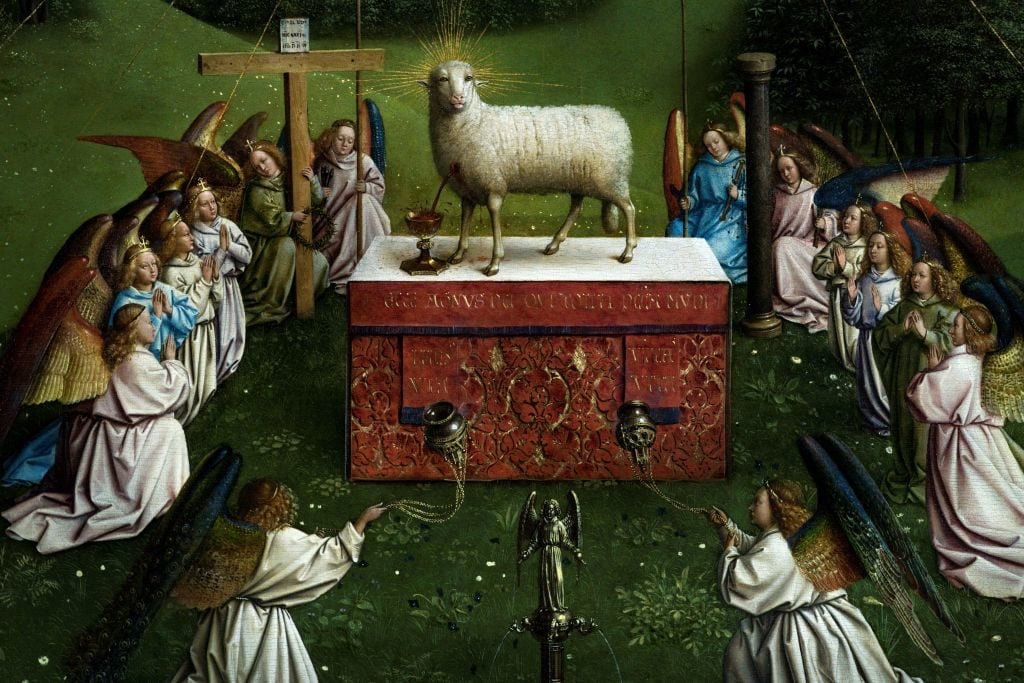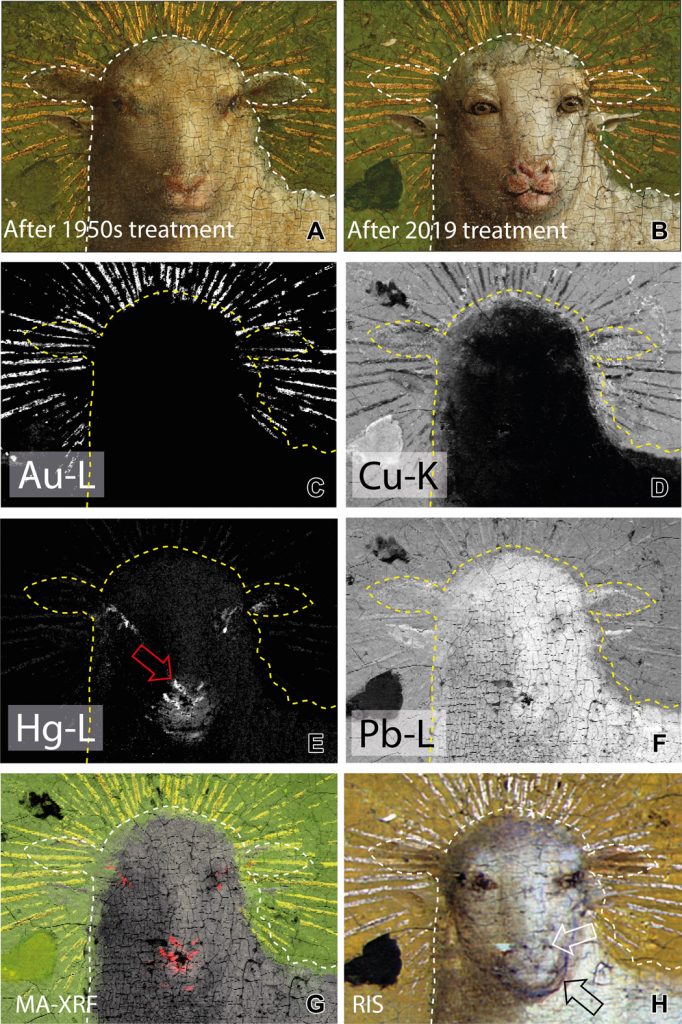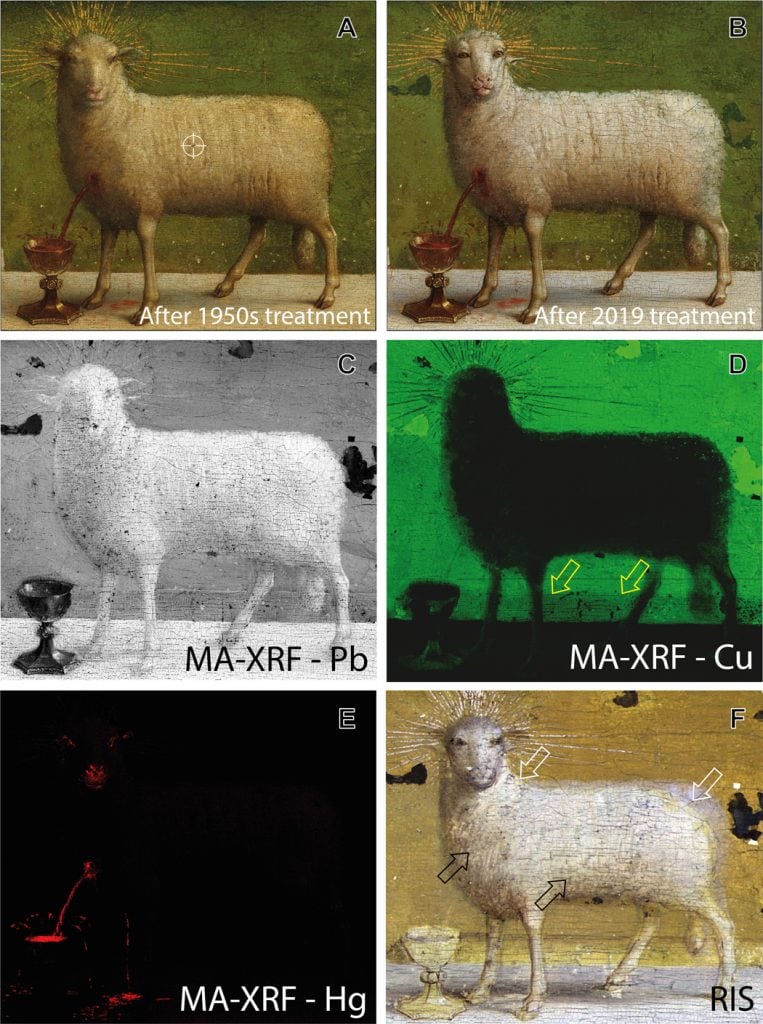Art World
Scientists Just Proved That the Humanoid Lamb in the Ghent Altarpiece That Everyone Made Fun of Is Supposed to Look Like That
Researchers vindicated a meticulous conservation effort that memesters called a restoration flop.

Researchers vindicated a meticulous conservation effort that memesters called a restoration flop.

Last winter, the results of an eight-year, $2.4 million restoration effort on the Ghent Altarpiece went viral when the 12-panel painting’s central figure, a lamb symbolizing Jesus, was mocked mercilessly for looking like a humanoid beast.
Memesters took the Belgium-based conservators to school like Ms. Frizzle, comparing the newly revealed lamb and its chiseled snout, ogre ears, and pouty mouth to beast Jesus, Steve Buscemi, and even Derek Zoolander.
But now, researchers have used advanced-imaging techniques to show that the conservators were right to reimagine the creature as a steroidal version of its once-sweet self.

Imaging details of the head of the lamb.
In a paper published yesterday in the journal Science Advances, experts at the University of Antwerp and the National Gallery of Art in Washington, DC, highlighted how several instances of overpainting had altered the original 12-panel masterpiece, painted in 1432 by Flemish brothers Jan Van Eyck and Hubert Van Eyck.
The scientists used a combination of non-invasive techniques (such as macroscopic X-ray fluorescence, X-ray radiography, and infrared reflectance reflectography) to determine the types of paint used, and the order in which they had been layered on.
Among other things, they found mercury, a chemical element once used in red paint, around the lamb’s nose, revealing more detailed nostrils. They also discovered the shape of its head by measuring the amount of infrared light absorbed by the paint in that region.
“Each method provides some level of chemical contrast in cases where the other does not,” the authors of the paper explained.

Images revealing the various layers of the lamb.
Ultimately, the researchers found three versions of the lamb: the Van Eycks’ supposed original; a second, completed shortly thereafter by the brothers or their contemporaries, which squared off the lamb’s hindquarters; and a third, likely done in the 16th century, which softened the lambs face—a look, the researchers suggest, that might have been more in keeping with depictions of holy animals at that time. (The restoration completed in 2019 was the first conservation effort since the 1950s.)
“A lot of misunderstandings have been propagated by absolutely stupid tweets taken completely out of context,” Hélène Dubois, one of the conservators who led the Ghent Altarpiece restoration, told the New York Times this January, before the painting went on view in a once-in-a-lifetime Jan van Eyck show in Belgium.
“This is the original sheep of van Eyck, which was painted over by someone else to make it look like a passive animal, and more anatomically correct,” Dubois added. “But this is what van Eyck’s intention was. It’s nothing bizarre; it’s just not what people are used to looking at and perhaps do not expect.”